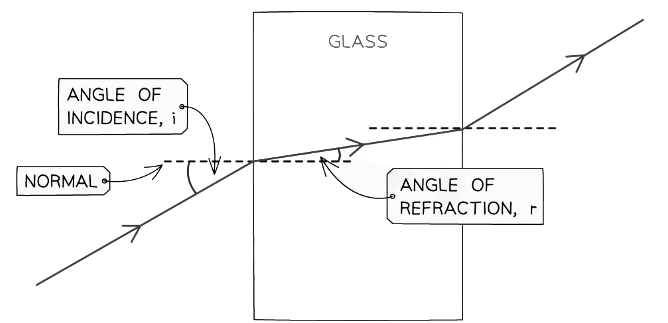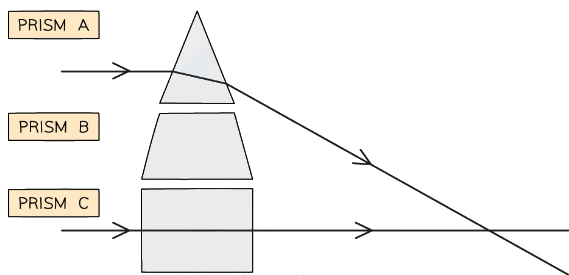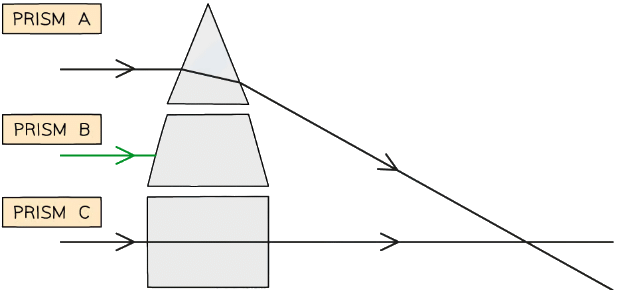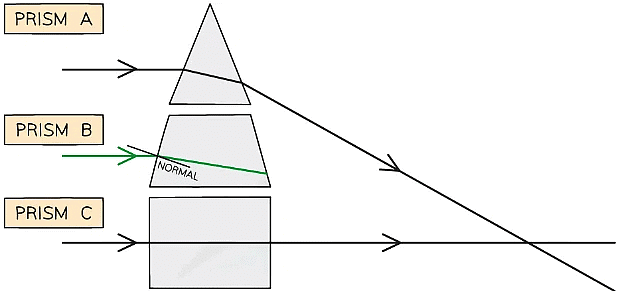Class 10 Exam > Class 10 Notes > Physics Class 10 ICSE > Introduction to Refraction
Introduction to Refraction | Physics Class 10 ICSE PDF Download
Refraction Ray Diagrams
- Refraction occurs when light passes a boundary between two different transparent media
- At the boundary, the rays of light undergo a change in direction
- The direction is taken as the angle from a hypothetical line called the normal
- This line is perpendicular to the surface of the boundaries and is usually represented by a straight dashed or dotted line
- The change in direction depends on which media the light rays pass between:
- From less dense to more dense (e.g air to glass), light bends towards the normal
- From more dense to less dense (e.g. glass to air), light bends away from the normal
- When passing along the normal (perpendicular) the light does not bend at all
 How to construct a ray diagram showing the refraction of light as it passes through a rectangular block
How to construct a ray diagram showing the refraction of light as it passes through a rectangular block
- The change in direction occurs due to the change in speed when travelling in different substances
- When light passes into a denser substance the rays will slow down, hence they bend towards the normal
- The only properties that change during refraction are speed and wavelength – the frequency of waves does not change
- Different frequencies account for different colours of light (red has a low frequency, whilst blue has a high frequency)
- When light refracts, it does not change colour (think of a pencil in a glass of water), therefore, the frequency does not change
Solved Example
The diagram below shows two parallel rays of light entering and passing through prism A and prism C.
Draw a third parallel ray entering and passing through prism B.
Step 1: Draw a parallel ray on the left
Step 2: Draw the refracted ray at the first surface
- As the ray enters the block it bends towards the normal since it is going into a denser material
- In this case, the angle of refraction is smaller than the angle of incidence
Step 3: Draw the refracted ray at the second surface
- As the ray leaves the block it bends away from the normal
- In this case, the angle of refraction is larger than the angle of incidence
Exam Tip
Practice drawing refraction diagrams as much as you can! It's very important to remember which way the light bends when it crosses a boundary:
As the light enters the block it bends towards the normal line
Remember: Enters Towards
When it leaves the block it bends away from the normal line
Remember: Leaves Away
The document Introduction to Refraction | Physics Class 10 ICSE is a part of the Class 10 Course Physics Class 10 ICSE.
All you need of Class 10 at this link: Class 10
|
28 videos|121 docs|14 tests
|
Related Searches


















